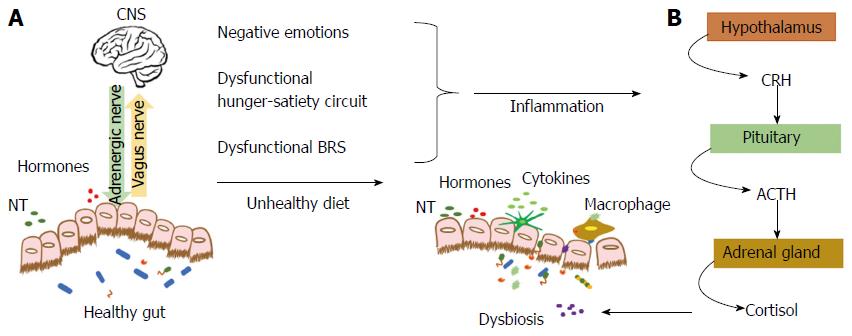Copyright
©The Author(s) 2017.
World J Gastroenterol. May 7, 2017; 23(17): 3030-3042
Published online May 7, 2017. doi: 10.3748/wjg.v23.i17.3030
Published online May 7, 2017. doi: 10.3748/wjg.v23.i17.3030
Figure 1 Gut-brain axis and dysbiosis.
A: The gut microbiota maintains a two-way communication with the CNS using hormones, neuropeptides, NT, cytokines and the afferent (vagus nerve) and efferent signals (adrenergic nerve); B: Alterations in the energy balance circuit and BRS that lead to negative emotions chronically activate the HPA axis elevating cortisol levels. Cortisol results in dysbiosis, allowing pathogens to permeate the gut barrier and activate inflammation. Unhealthy dietary patterns also lead to dysbiosis, inflammation and negative emotions. CNS: Central nervous system; BRS: Brain reward system; CRH: Corticotrophin-releasing hormone; ACTH: Adrenocorticotropic hormone; HPA: Hypothalamus-pituitary-adrenal.
- Citation: Panduro A, Rivera-Iñiguez I, Sepulveda-Villegas M, Roman S. Genes, emotions and gut microbiota: The next frontier for the gastroenterologist. World J Gastroenterol 2017; 23(17): 3030-3042
- URL: https://www.wjgnet.com/1007-9327/full/v23/i17/3030.htm
- DOI: https://dx.doi.org/10.3748/wjg.v23.i17.3030









